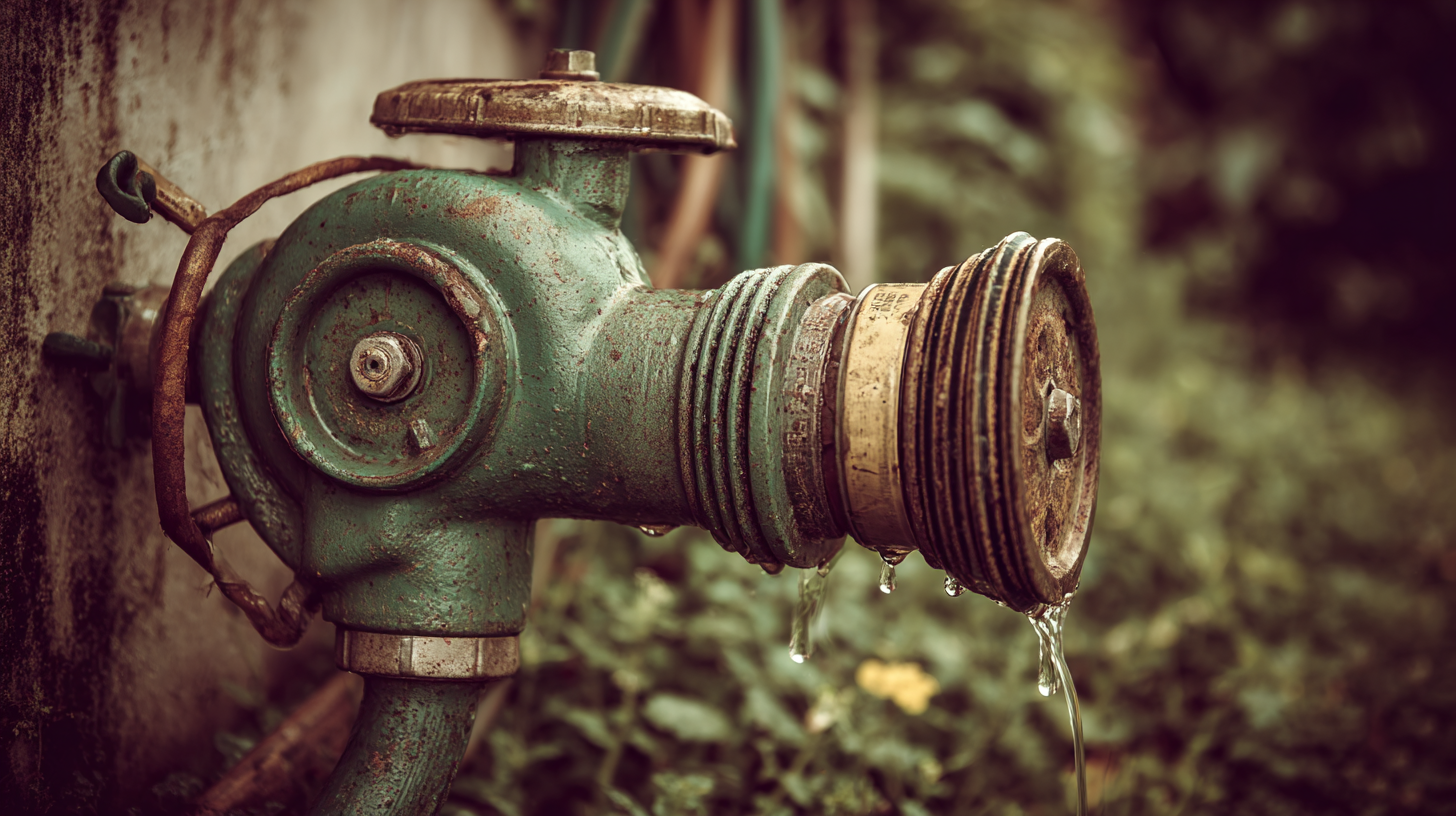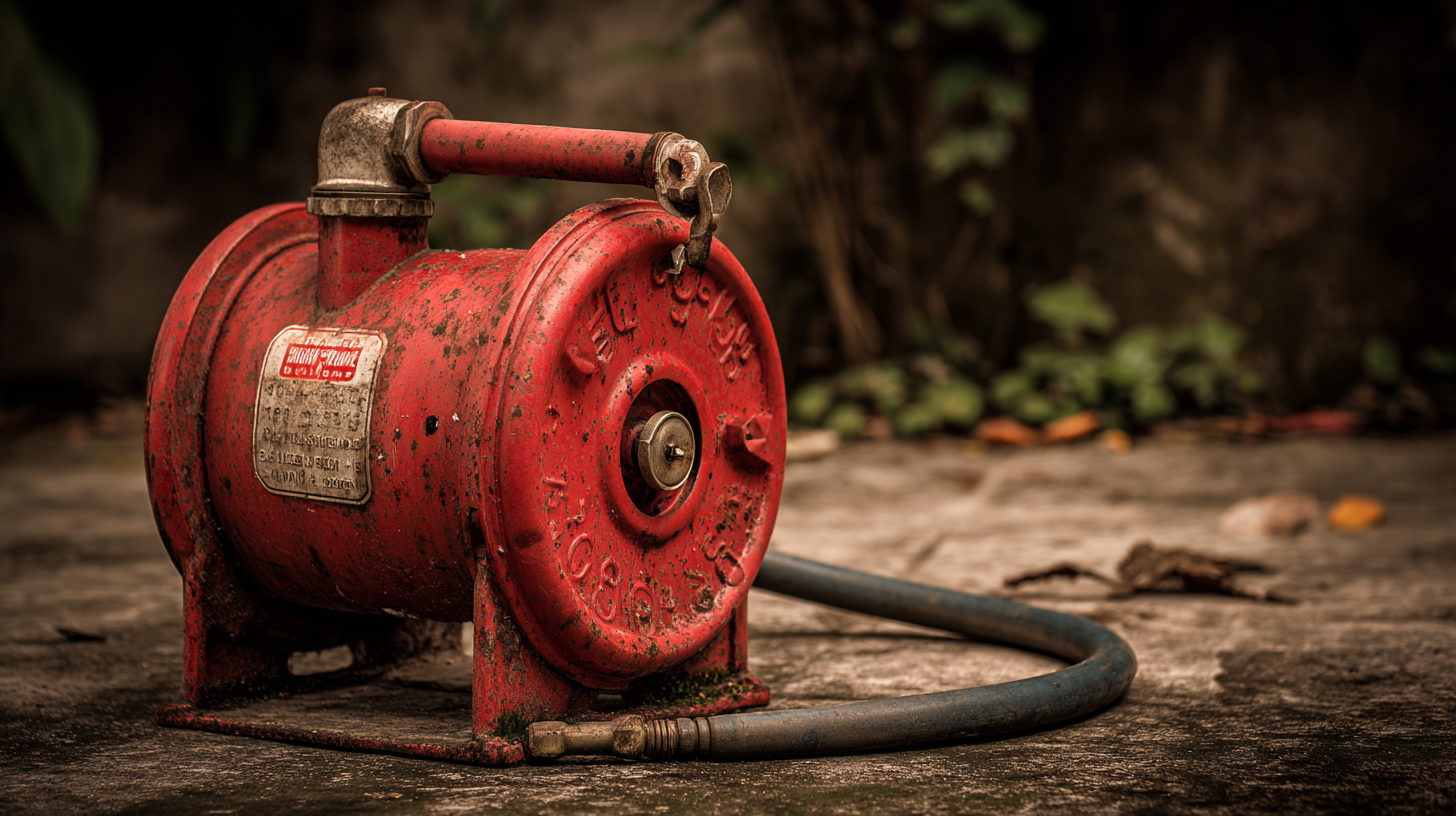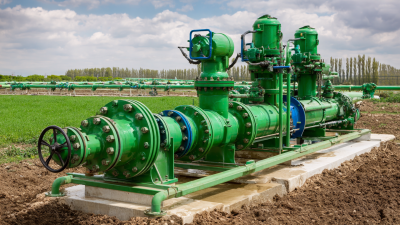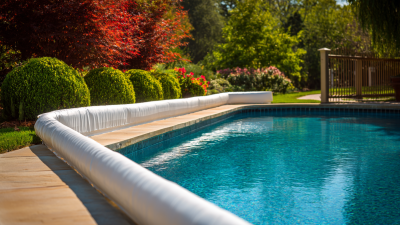Selecting the right water hose pump is crucial for ensuring that your gardening needs are met efficiently and effectively. According to a recent industry report by the National Gardening Association, around 35% of households in the U.S. engage in gardening, highlighting the increasing importance of reliable watering solutions. A water hose pump can significantly enhance water flow and pressure, making it easier to irrigate large areas or manage different plant types. The market for garden pumps is projected to grow by 5% annually, driven by the rising interest in sustainable practices and water-efficient gardening techniques. With an array of options available, understanding the features, capacities, and intended uses of water hose pumps is essential for optimizing your garden's health and productivity. This guide aims to equip you with the knowledge needed to choose the best water hose pump tailored to your specific gardening requirements.

When it comes to gardening, selecting the right water hose pump can greatly enhance your watering efficiency and plant health. Understanding the different types of water hose pumps is crucial for making an informed choice. Common types include centrifugal pumps, which are ideal for providing high flow rates for garden irrigation, and diaphragm pumps, which are better for delivering water with higher pressure. According to a recent report from the National Gardening Association, using the appropriate pump can increase water efficiency by up to 30%, contributing positively not only to garden maintenance but also to water conservation efforts.
Tips for choosing the right water hose pump include considering the size of your garden and the type of plants you are watering. For larger gardens, a centrifugal pump with a higher capacity is recommended, while a diaphragm pump can be beneficial for smaller gardens with delicate plants. Additionally, take note of the power source; electric pumps typically provide consistent pressure but may require proximity to an outlet, whereas manual pumps offer portability and ease of use in remote areas.
Another factor to consider is the pump's compatibility with your existing hose and watering system. Make sure the fittings match your hoses to prevent leaks and inefficiencies. Regular maintenance and seasonal checks can also prolong the life of your pump, ensuring your garden thrives throughout the growing season. By carefully evaluating these aspects, you can select a water hose pump that meets your gardening needs effectively.
When selecting a water hose pump for gardening, several key features should be prioritized to ensure optimal performance. Firstly, consider the pump's flow rate, typically measured in gallons per minute (GPM). A report by the National Gardening Association highlights that a flow rate of 3-5 GPM is usually sufficient for most residential garden setups, ensuring a steady water supply for irrigation without overwhelming plants.
Next, evaluate the pump's power source. Electric pumps are often favored for their convenience and consistent performance, while gas-powered models may deliver higher pressure and mobility. According to a recent study by the American Society of Agricultural and Biological Engineers, electric pumps produce less noise and require less maintenance, making them ideal for residential gardeners who prioritize ease of use. Additionally, look for features such as automatic thermal shut-off and portability, as these contribute significantly to the longevity and functionality of the pump in varied gardening applications.
When selecting a water hose pump for your gardening needs, one critical factor to consider is the pump's capacity, typically measured in gallons per hour (GPH). Understanding GPH helps you determine how quickly and efficiently you can water your garden, ensuring that your plants receive the necessary hydration without wasting resources. A higher GPH rating means the pump can move more water in less time, which is particularly beneficial for larger gardens or when you need to irrigate during peak heat hours.
**Tips:** Always consider the size of your garden and the types of plants you are nurturing. For smaller gardens, a pump with a GPH between 500-800 may suffice, while larger areas or more extensive landscaping might require pumps that exceed 1000 GPH. Additionally, look for pumps that allow for adjustable flow rates, enabling you to customize water delivery based on your specific requirements.
Another aspect to keep in mind is the layout of your garden and the distance from your water source. Both factors influence how effectively a pump can function at its rated capacity. Be sure to account for any elevation changes and the length of hoses used, as these can impact water pressure.
**Tips:** Conduct a simple test with your hose setup before settling on a pump to ensure optimal performance. Check the flow rate at different points in your garden to find the most efficient solution that meets your watering demands.

When selecting a water hose pump for your gardening needs, assessing the durability and material of the pump is paramount. The construction quality directly influences not only the pump’s lifespan but also its efficiency in handling varying water pressures and volumes. Pumps made from high-grade materials, such as polycarbonate or stainless steel, offer impressive resistance to corrosion and wear, ensuring they can withstand exposure to water and environmental elements over time.
Additionally, the choice of material impacts the overall weight and portability of the pump. Lightweight pumps facilitate easier handling and transport around the garden, while sturdier constructions, though heavier, may offer enhanced stability and reliability during use. Investing in a well-built water hose pump is crucial, as it reduces the likelihood of frequent repairs or replacements, allowing gardeners to focus more on their plants rather than equipment maintenance. Therefore, evaluating the durability and material of your pump is a vital step in ensuring a successful and sustainable gardening experience.

When selecting a water hose pump for your gardening needs, budget considerations often come to the forefront. A recent survey by the American Society of Landscape Architects revealed that a staggering 67% of homeowners prioritize cost when purchasing gardening equipment. However, it’s essential to balance cost with quality to ensure you are investing in a durable and efficient product that will last through various gardening seasons.
**Tip 1: Research and Compare**
Before making a purchase, take the time to research different brands and models. Look for pumps that offer a warranty and have positive reviews, as this is often indicative of quality. For instance, models in the $100 to $200 range often provide the best balance of affordability and functionality, as indicated by recent industry reports.
Another key point in budgeting is to consider the long-term savings that a high-quality pump can provide. While initially more expensive, energy-efficient pumps can significantly lower your water and electricity bills. According to the EPA, energy-efficient models can save homeowners up to 30% annually on operational costs.
**Tip 2: Analyze Your Needs**
Consider the scale of your gardening project. A smaller garden may not require a commercial-grade pump, while larger areas would benefit from powerful and efficient models. Investing wisely by analyzing your specific needs can lead to enhanced performance and better value over time.






Please enter the details to download, thank you
Get in Touch With Us
Please enter the details to download, thank you
Please enter the details to download, thank you
Please enter the details to download, thank you
Please enter the details to download, thank you
Please enter the details to download, thank you
Please enter the details to download, thank you
Please enter the details to download, thank you
Please enter the details to download, thank you
Please enter the details to download, thank you
Please enter the details to download, thank you
Please enter the details to download, thank you
Please enter the details to download, thank you
Please enter the details to download, thank you
Please enter the details to download, thank you
Please enter the details to download, thank you
Please enter the details to download, thank you
Please enter the details to download, thank you
Please enter the details to download, thank you
Please enter the details to download, thank you
Please enter the details to download, thank you
Please enter the details to download, thank you
Please enter the details to download, thank you
Please enter the details to download, thank you
Please enter the details to download, thank you
Please enter the details to download, thank you
Please enter the details to download, thank you
Please enter the details to download, thank you
Please enter the details to download, thank you
Please enter the details to download, thank you
Please enter the details to download, thank you
Please enter the details to download, thank you
Please enter the details to download, thank you
Please enter the details to download, thank you
Please enter the details to download, thank you
Please enter the details to download, thank you
Please enter the details to download, thank you
Please enter the details to download, thank you
Please enter the details to download, thank you
Please enter the details to download, thank you
Please enter the details to download, thank you
Please enter the details to download, thank you
Please enter the details to download, thank you
Please enter the details to download, thank you
Please enter the details to download, thank you
Please enter the details to download, thank you
Please enter the details to download, thank you